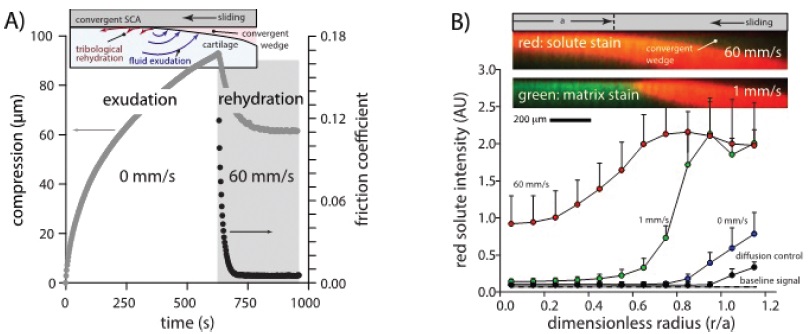Shining a light on the tribological rehydration of cartilage
Axel C. Moore, Brian T. Graham, Chris Price, David L. Burris, University of Delaware | TLT 2016 TFC Abstract Highlights August 2017
Cartilage exudes interstitial fluid and metabolic waste products during loading and recovers interstitial fluid and nutrients from the synovial fluid during articulation through mechanisms that remain unclear. Here we illustrate a fundamentally new and unanticipated mechanism of fluid and nutrient uptake by articular cartilage. During sliding following static loading against glass (inset A), simultaneous compression and friction reduction provide strong but indirect evidence of sliding-induced fluid recovery, which we call tribological rehydration. An in-situ solute absorption assay was used to test this hypothesis (inset B). The penetration of the 1nm diameter solute into the buried contact area was strongly speed dependent; solute uptake in the center of contact was only significant at 60 mm/s, which is near physiological sliding speeds (100-150 mm/s). The results suggest that fluid entrained at the leading edge of contact is pressurized and subsequently forced back into the porous articular surface to restore hydration, thickness, nutrition and lubrication. While inactivity is associated with dysfunction and disease due to exudation, these results suggest that regular physical activity promotes long-term joint health because tribological rehydration counteracts the detrimental effects of the exudation process on the mechanical, tribological and biological functions of cartilage.
